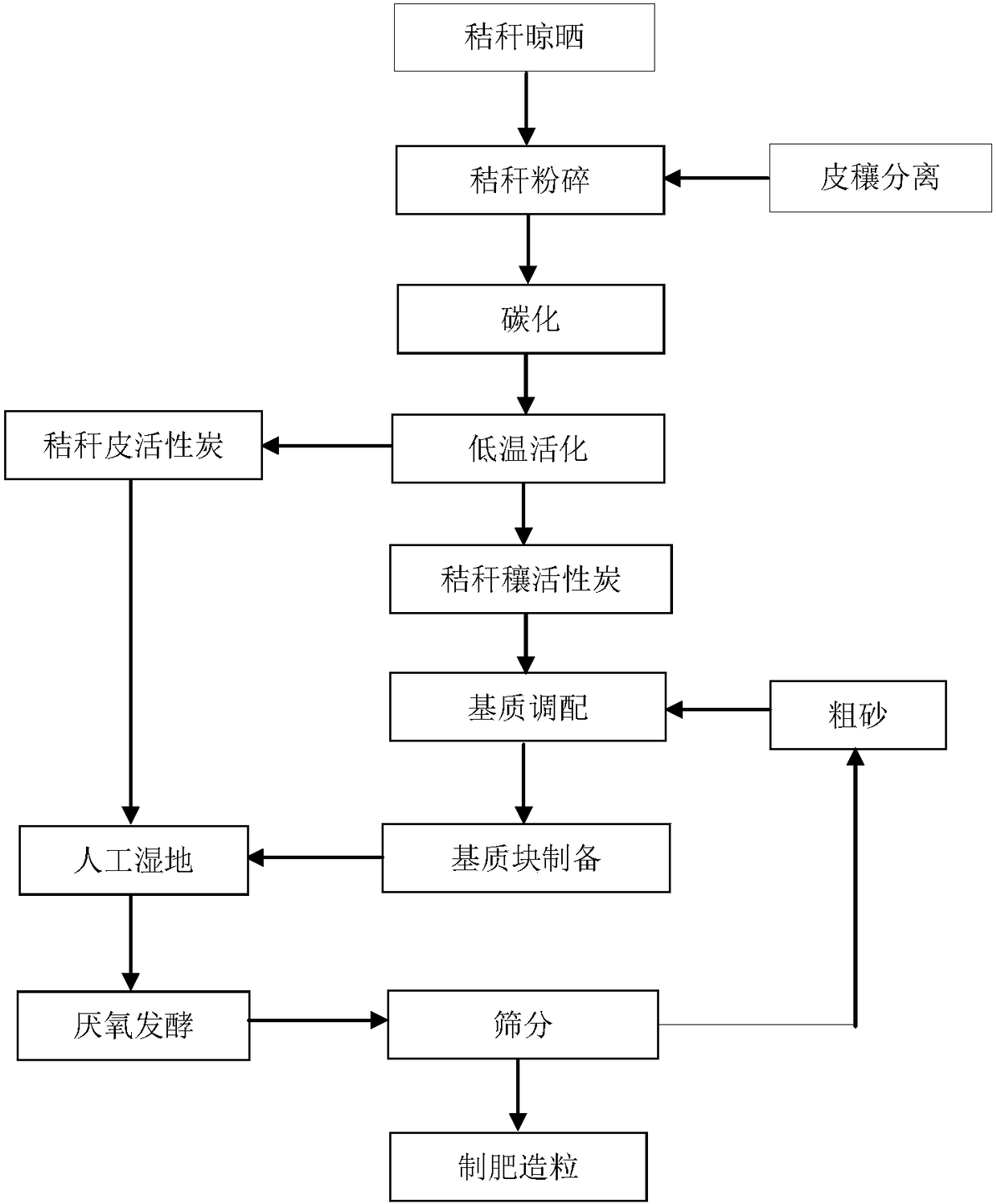Method for preparing constructed wetland substrate from cornstalks
A technology of artificial wetlands and corn stalks, applied in the field of environmental ecology, can solve the problems of no resource utilization, low resource utilization rate, and difficulty in popularization and application, and achieve the effects of low cost, long service life, and strong operability
- Summary
- Abstract
- Description
- Claims
- Application Information
AI Technical Summary
Problems solved by technology
Method used
Image
Examples
example 1
[0016] Example 1: Substrate preparation of constructed wetlands in urban parks
[0017] like figure 1 As shown, the straw in this method goes through six steps successively: drying, crushing, carbonization, low-temperature activation, matrix preparation and matrix block preparation. First, remove the leaves of the harvested corn stalks and then dry them in the air until the water content is lower than 15%, then separate the skins from the husks; ~8mm, 8~12mm three particle size ranges, the length of the removed straw husk is 5~10mm, and the width is less than 5mm; thirdly, the crushed corn stalk particles are carbonized at 225°C for 100min, and the crushed straw husk Carbonize the particles at 400°C for 55 minutes; fourth, soak the carbonized corn stalk-based activated carbon and straw skin-based activated carbon for 18 hours, and then freeze the saturated matrix at -25°C for 3 days before low-temperature activation; Fifth, after activation, straw-based activated carbon with...
example 2
[0024] Example 2: Substrate Preparation of Sewage Treatment Constructed Wetland
[0025] like figure 1 As shown, there are six steps in the method: first, first remove the leaves of the harvested corn stalks and then dry them in the sun until the water content is lower than 15%. The corn stalks are crushed to three particle size ranges of 1-5mm, 5-8mm, and 8-12mm. The length of the removed straw bark is 5-10mm and the width is less than 5mm; carbonization under the same conditions for 80 minutes, and the crushed straw husk particles were carbonized at 450°C for 45 minutes; fourth, soak the carbonized corn stalk-based activated carbon and straw husk-based activated carbon for 26 hours, and then soak the saturated matrix at -35°C Frost heaving for 3 days for low-temperature activation; fifth, after activation, mix straw-based activated carbon with different particle sizes, and add coarse sand with a total mass of 45% and a particle size of 0.5-1 mm to the mixture, and fully sti...
PUM
| Property | Measurement | Unit |
|---|---|---|
| length | aaaaa | aaaaa |
| particle diameter | aaaaa | aaaaa |
| thickness | aaaaa | aaaaa |
Abstract
Description
Claims
Application Information
 Login to View More
Login to View More - R&D
- Intellectual Property
- Life Sciences
- Materials
- Tech Scout
- Unparalleled Data Quality
- Higher Quality Content
- 60% Fewer Hallucinations
Browse by: Latest US Patents, China's latest patents, Technical Efficacy Thesaurus, Application Domain, Technology Topic, Popular Technical Reports.
© 2025 PatSnap. All rights reserved.Legal|Privacy policy|Modern Slavery Act Transparency Statement|Sitemap|About US| Contact US: help@patsnap.com

